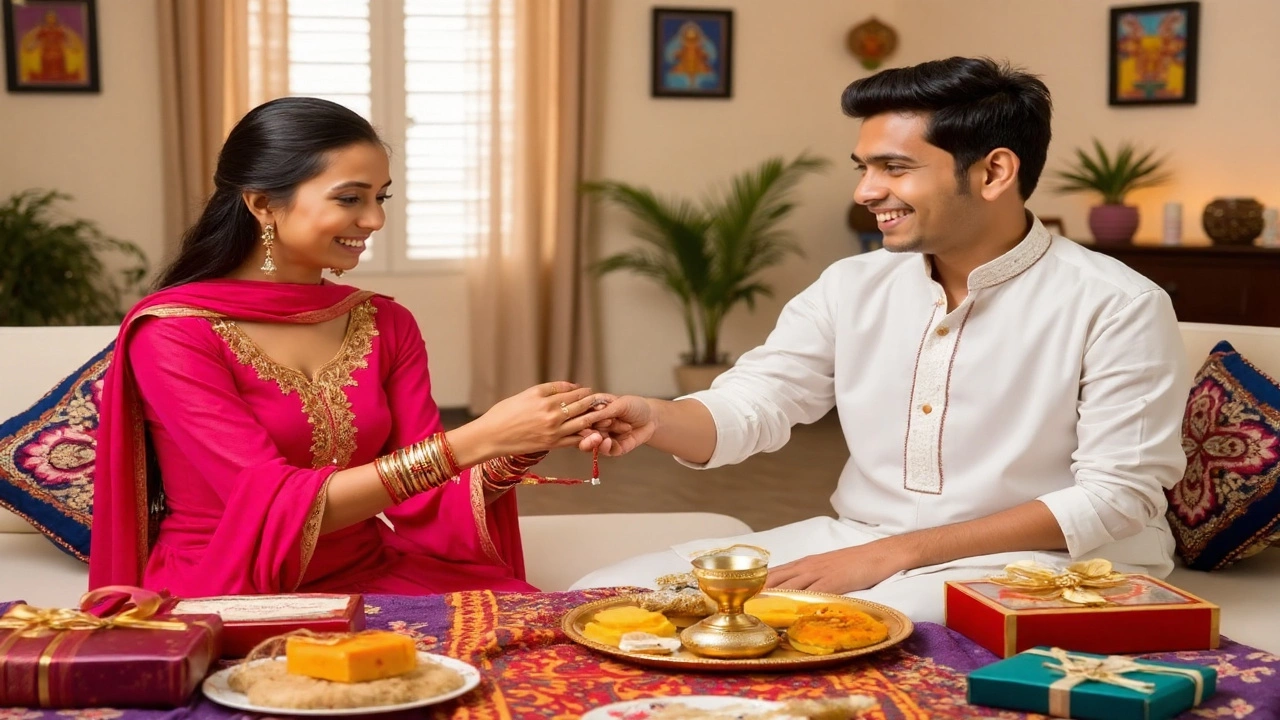Raksha Bandhan 2025: Shubh Muhurat, Rituals and How to Prepare the Perfect Pooja Thali

When is Raksha Bandhan 2025? Timings and Auspicious Muhurat Explained
Mark your calendars—this year, Raksha Bandhan is set for Saturday, August 9, 2025. Ask anyone what really matters on this day and you'll probably hear about timing. The festival lands on the full moon (Purnima) of the Shravana month, and that means people across India, from New Delhi to Mumbai, pay close attention to the Shubh Muhurat for tying the holy Rakhi.
The Shubh Muhurat for Rakhi in 2025 begins at 5:47 AM and wraps up at 1:24 PM IST. This gives families a generous window—just over 7.5 hours—for celebrations. The full moon itself kicks in at 2:12 PM on August 8 and goes on until 1:24 PM the next day. There’s a catch, though: not every minute is equally sacred. In particular, Vedic astrologers always warn against the Bhadra period, an inauspicious span which thankfully wraps up before sunrise this year. So, if you’re planning to stick to tradition, you’ve got a hassle-free Muhurat for all rituals.
For the truly mindful, there’s a smaller window within the window. That’s the Abhijit Muhurat, considered by priests as supercharged for rituals and blessings. On August 9, this prime slot arrives at 11:59 AM and closes at 12:53 PM—just shy of an hour. Many families plan the main Rakhi-tying for this moment, hoping for that extra bit of grace.
But there’s one period you’ll want to avoid: Rahukaal. This is an astrological no-go zone, believed to bring bad luck if you’re performing any auspicious activity. In Delhi, Rahukaal lasts from 9:07 AM to 10:47 AM, so best steer clear during that 1 hour 40 minute window. Other cities have slightly different timings for both the start of the Shubh Muhurat and Rahukaal:
- New Delhi: 5:47 AM – 1:24 PM
- Mumbai: 6:18 AM – 1:24 PM
- Gurgaon: 5:48 AM – 1:24 PM
- Noida: 5:46 AM – 1:24 PM
Setting Up the Pooja Thali and Rituals to Follow
Talk to any family who’s observed Raksha Bandhan for years, and they’ll say the Pooja Thali is as important as the Rakhi thread itself. The thali isn’t just a plate—it’s a set of essentials, each with a reason and meaning. Here’s what you need to include so you don’t miss anything symbolic:
- A sturdy plate or tray, often silver, copper, or steel
- Rakhi threads, which can be simple, colorful, or even fancy depending on your style
- Kumkum (vermillion) and haldi (turmeric) for the sacred tilak
- Raw rice grains, known as akshat
- A diya (oil or ghee lamp) to represent victory of light
- An assortment of Indian sweets or dry fruits—no rakhi is ever complete without a bite of something sweet
- A small bowl of clean water
- Fresh flowers to decorate (jasmine and roses work great)
- Incense sticks for the aroma and spiritual touch
Every item has to be perfectly clean and neatly placed. Rakhi threads stay in their own container, away from other ingredients. Sisters often put on their best ethnic outfits, while brothers tend to dress up for the day. It’s all about showing respect and celebrating the bond in style.
The actual ritual is straightforward, but full of meaning. Sisters start by placing a tilak of kumkum and rice on the brother’s forehead, then circle the lit diya in front of him—a gesture for prosperity and protection. Next comes tying the Rakhi, usually on the right wrist, and reciting prayers or mantras for safety. Afterward, the brother gives his sister gifts and assures her of lifelong protection. Sweets are shared and the atmosphere turns festive in an instant.
For those living outside India, finding the right muhurat is a little trickier with time zones, but the central idea holds strong. It doesn’t really matter where you celebrate, as long as you bring in those age-old traditions and a dash of family love every year.
